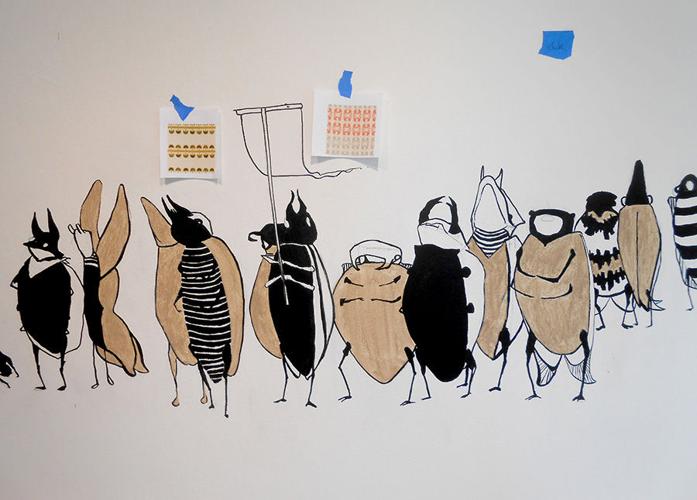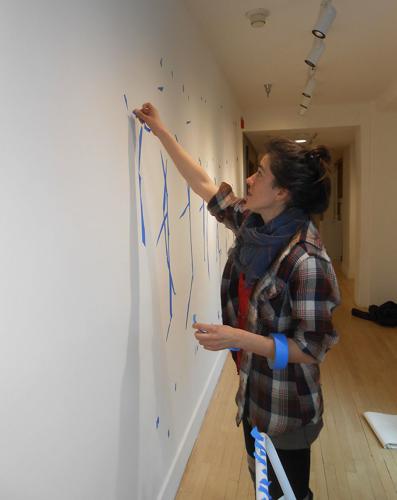A gargantuan parade of “insect people” and two mixed-media works incorporating personal objects, garlic stalks, and harvested items from a reservation landfill populate Eliza Naranjo Morse’s new exhibit at the Museum of Contemporary Native Arts. Some of the choices for the Forward show were made in collaboration with curator Candice Hopkins. Naranjo Morse (Santa Clara Pueblo) has been working for some time on elements of the three-part exhibition, which embraces notions of family, community, and culture. “Perhaps we yearn to make our lives good and find balance because even when we feel completely challenged, there is the unrelenting proof in each of us that we are survivors, that we are the result of our ancestors’ histories and that eventually we will become ancestors,” she says in the statement for the show, which opens at the Museum of Contemporary Native Arts on Friday, Jan. 22. “This collection of work interprets facets of this thought.”
The artist studied figure drawing at New York’s Parsons School of Design and figure drawing and painting at the Institute for American Indian Arts, and then earned a bachelor’s degree in art from Skidmore College. She is known for a wide variety of works, including clay drawings, oil-on-canvas paintings, stencil abstractions, sewn “paintings,” and glow-in-the-dark pictures. In 2008, she worked with her mother, Nora Naranjo Morse, and cousin Rose Simpson — both also esteemed artists — on a piece for SITE Santa Fe’s Seventh International Biennial, Lucky Number Seven. They said at the time that their piece, Storyline, was about the importance of the land in their lives and their art. The snakelike piece was constructed using nylon pantyhose, quilt batting, rice, and sticks, all covered in clays of different types from Santa Clara Pueblo, the Cochití area, Abiquiú, and the Picurís area. Besides what was installed at SITE, the work had philosophically connected elements at the School for Advanced Research, MoCNA, and St. Francis Auditorium. “We wanted to create a concept that was sort of all-encompassing,” Eliza Naranjo Morse said, “and in order to do that, it had to be very minimal, so the concept was broken down to a line and the idea of emergence and traveling.”
In 2010, in a project carried out in association with the Smithsonian Institution, she worked for a month with children in Veracruz, Mexico, using local organic materials to create large works of art. In late 2014, she and her mother participated in the 5 x 5 Project in Washington, D.C. Their performance piece, titled Digging, was staged to call attention to the devaluation of physical labor. “I did that with my mom and Alexis Elton, an artist in New York. We did it in one location and we spent 25 days there, digging in different costumes that represented different types of workers. We wanted to express the idea that when you sweat into land, you’re putting your blessing into it, your energy into it.”


